Sagittarius serpentarius
Other than flightless birds, how far can a bird walk to find food in a day? Would it walk the length of an entire football field, say 120 yards? Or could it walk the length of almost 300 football fields supplemented with flights? Welcome to the sub-Sahara, African world of the Secretarybird (as it is spelled in Africa/Europe) aka Secretary Bird in the US. This 4-5’ crane-like bird with an eagle-like bill prefers to walk instead of fly. Surely it wins the PEDESTRIAN BIRD OF THE WORLD AWARD to cover almost 20 miles in a day!
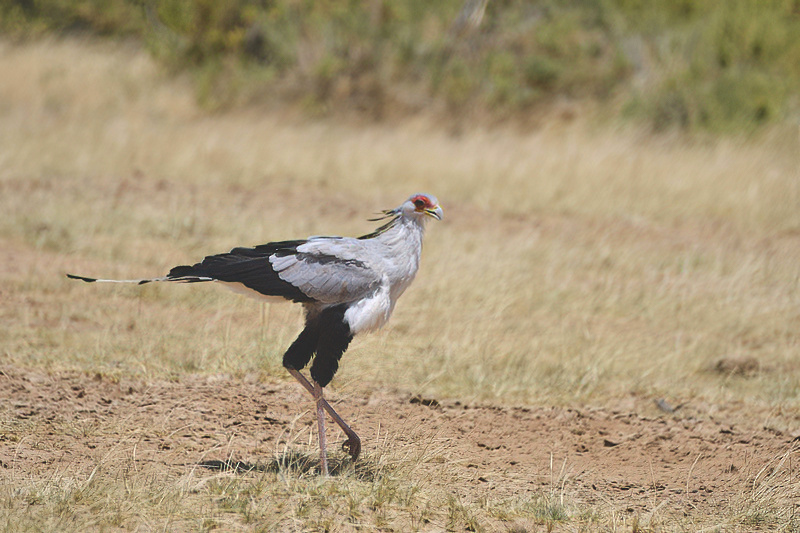
This unique bird serves as a complete one-of-a-kind, active-during-the-day raptor with no other cousins or subspecies. Like other raptors it sports a curved bill but flaunts powerful short-toed feet instead of talons. According to certain scientists, diurnal raptors are divided into five groups and may not be close living relatives: the Secretarybird, the Osprey, New World Vultures, Hawks and Eagles and their Allies including Old World Vultures, and Falcons and Caracaras and their Allies.
Those of us living in the Yucatan and the Americas are familiar with “our” terrestrial raptor, the Crested Caracara. Both the caracara and Secretarybird hunt primarily on the ground, catch live prey, and can scavenge crispy critters from a fire. And both can fly. The Secretarybird can fly at 9,000 feet or more.
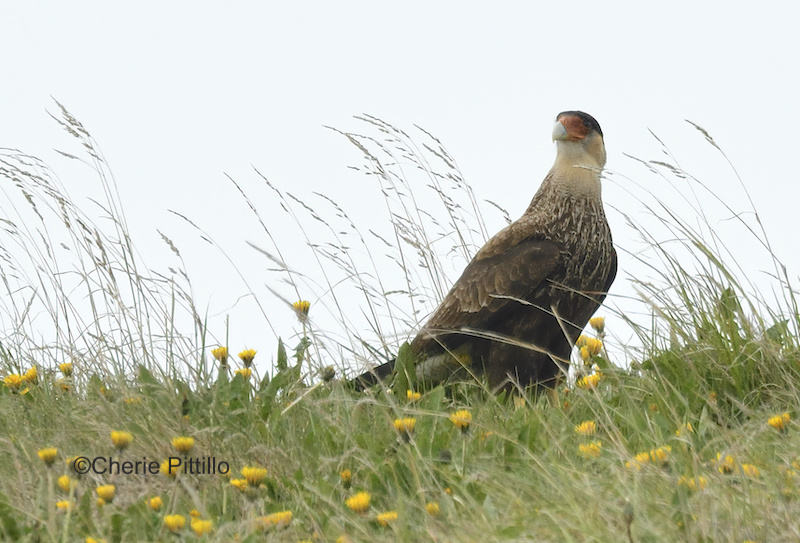

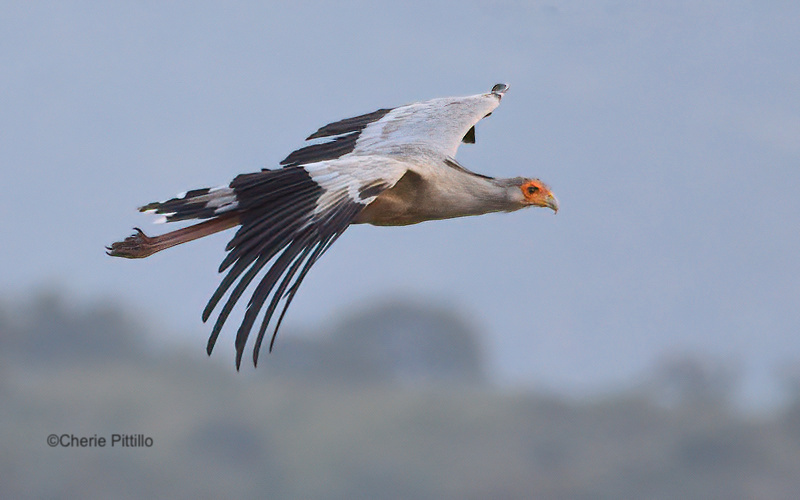
HABITAT
The Secretarybird prefers open grasslands and savannas with some occurring in semi-deserts and lightly wooded scrub areas to locate diverse prey. Plus agricultural land increases hunting grounds.
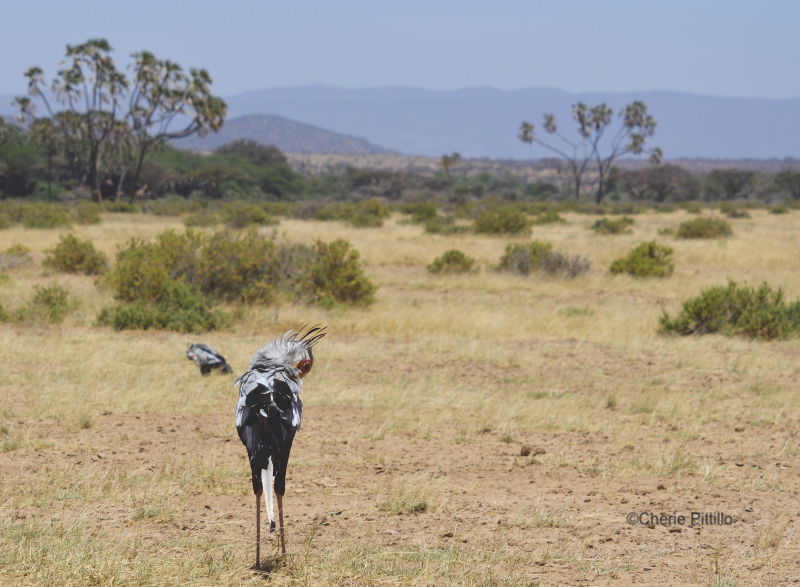
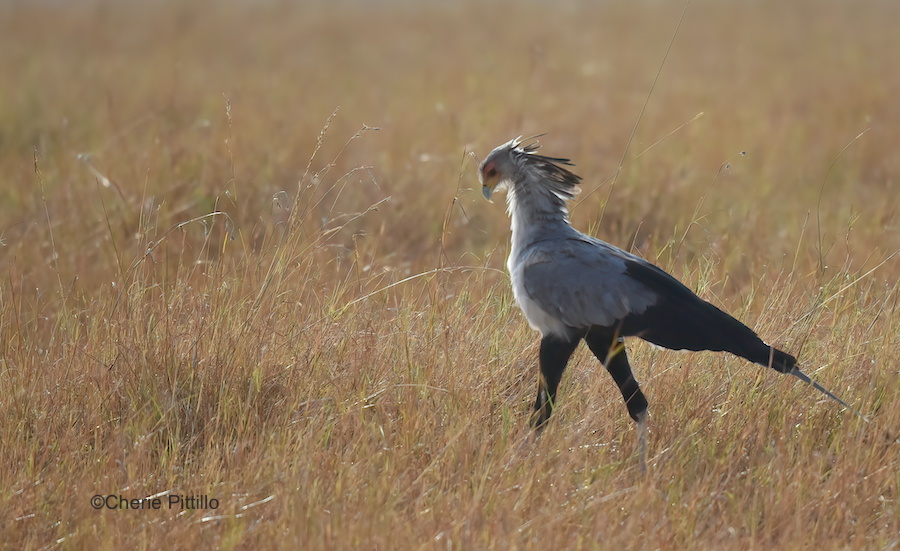
PREY
Depending on the reference, Secretarybirds famously feed on reptiles including venomous snakes such as cobras and puffs adders, small mammals, lizards, frogs, and small to large insects. Actually their prey varies from anything they can catch such as young chickens, small pets, small birds, eels, rabbits and hares, meerkats, mongooses, shrews, somehow hedgehogs, small carrion, and sometimes have swallowed egg-like golf balls.
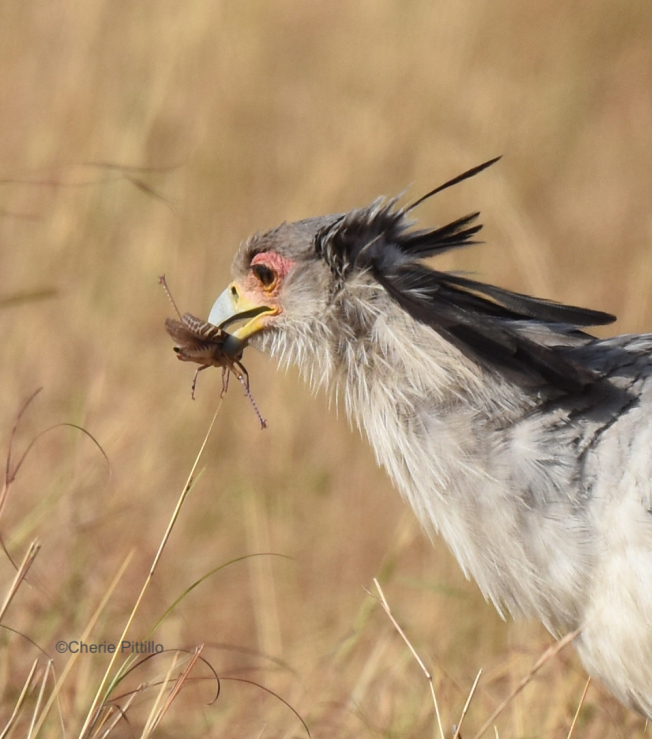
With such a varied array of prey, Secretarybirds regurgitate pellets of fur, hair, and bones which are used by scientists to unravel that prey mystery.
FEEDING METHODS
What is amazing is how this bird obtains food. Of course it uses its bill to capture prey which it can also chase down with outspread wings while running or walking on the ground. Sometimes it may throw the prey into the air to fall or even fly with it to drop it from a higher altitude! But an impressive method appears to be a swift stomp behind the head of a snake, lizard, or other larger prey to break the spinal column. It keeps up that strong tap dance kicking until no movement is detected of any prey.
Some references mention this species may be immune to snake venom. Others mention how it defies death by flapping wings and tail feathers to distract the snake while kicking the life out of it. If the snake connected with any non-living feather, it wouldn’t kill the bird. Supposedly thick legs scales may also protect the bird from snake bite.
That stomp has been measured quicker than a blink of an eye at 195 newtons or a force of 44 pounds about five times more than it weighs. The skilled feat of feet requires a high level of coordination between eyesight, nerves, and muscles.
IS IT TYPECAST?
In addition to this long-legged, ground-dwelling raptor, let’s address those black head feathers. Since the 1800s, reference after reference states that its name derived from male secretaries in the UK who worked for naturalists. These secretaries placed goose quill pens behinds their ears and that is how the Secretarybird got its name. However, another theory states the original description were Arabic words for hunter bird as the genus Sagitarrius implies which was mistranslated by European linguists. So it is NOT typecast!
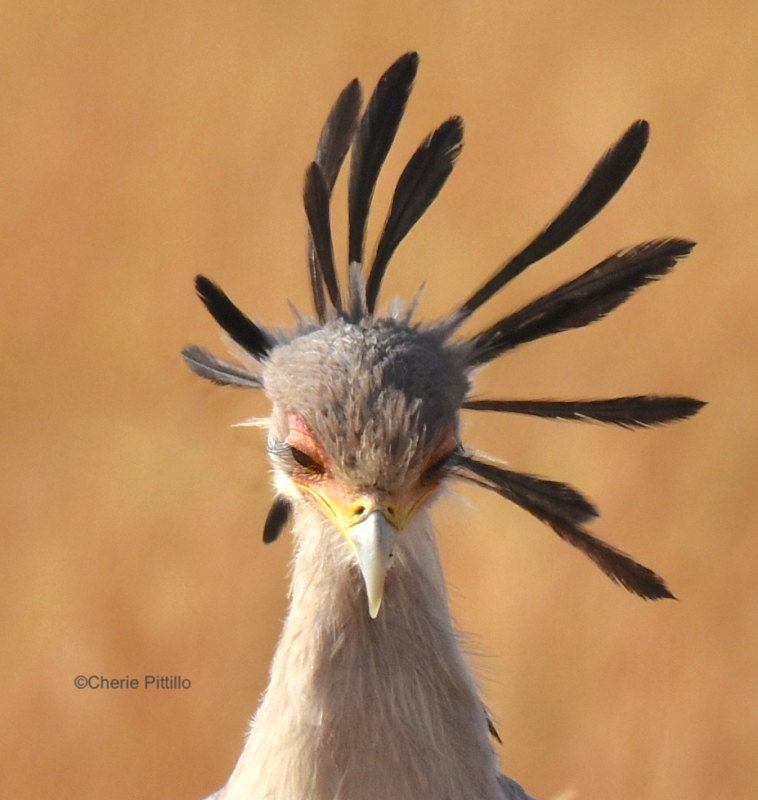
ADAPTATIONS
However this bird received its common name, those feathers can be raised when the bird is alarmed, or when its windy, or possibly for individual identification. In addition that colorful, bare facial skin may actually function in social signals. What appears to be incredible eyelashes are actually strong rictal bristles that help keep dust and debris out of the eyes.
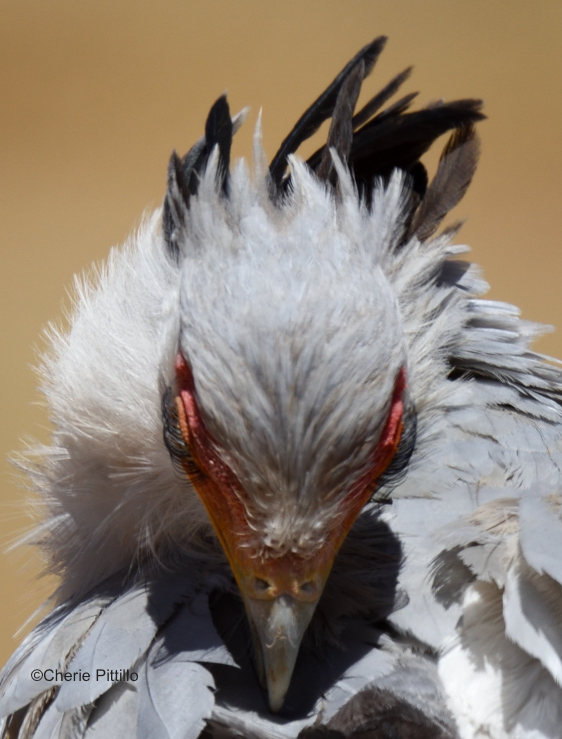
Since birds don’t have sweat glands, this species appears to pant, just like a family dog does to cool off.
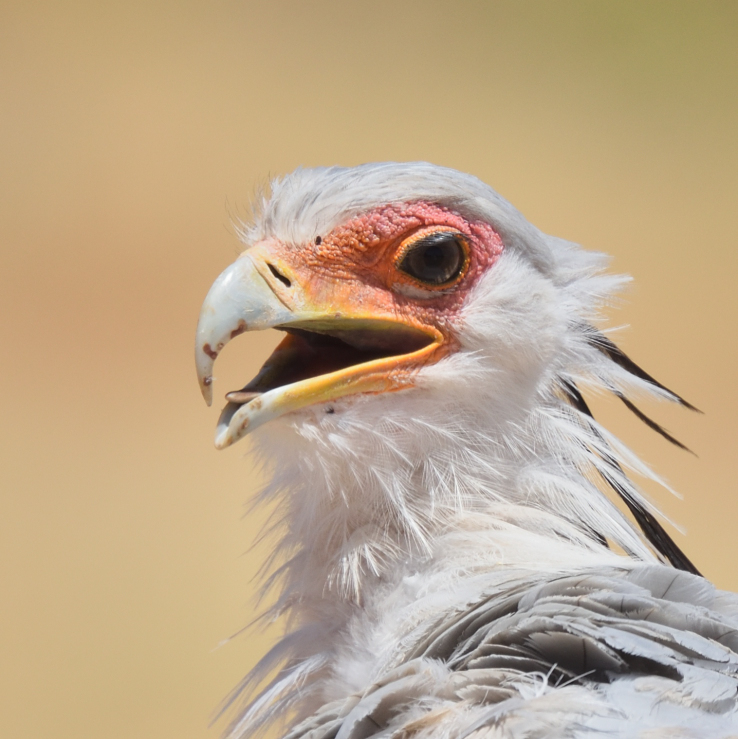
Like many species, preening helps keep the skin and feathers in good condition and helps remove parasites. After preening, it will lie on the ground with outstretched wings while checking around its environment. Many birds sunbathe to get rid of parasites. Note this bird chose a spot that it doesn’t need to look directly in front of it for safety.
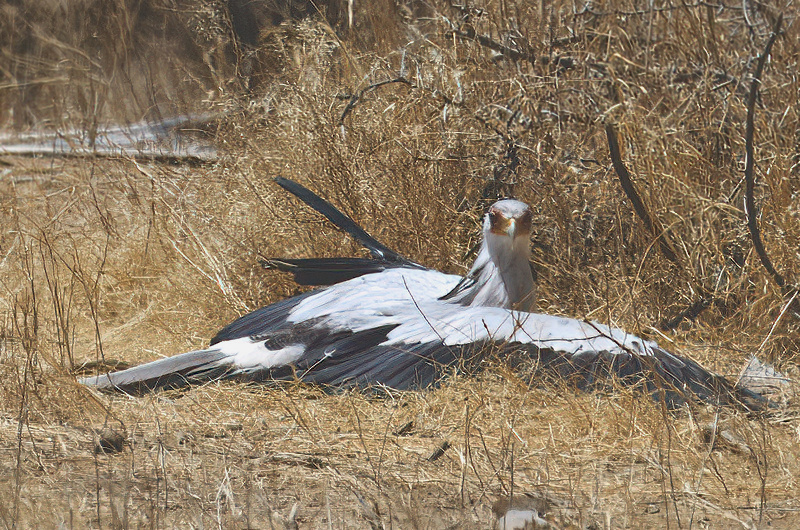
And those tall legs look as if this bird wears black bermuda shorts with pink high tops. (Remember, that “knee joint” is actually a bird’s ankle.) It also sports two central tail feathers that appear like a counter balance.
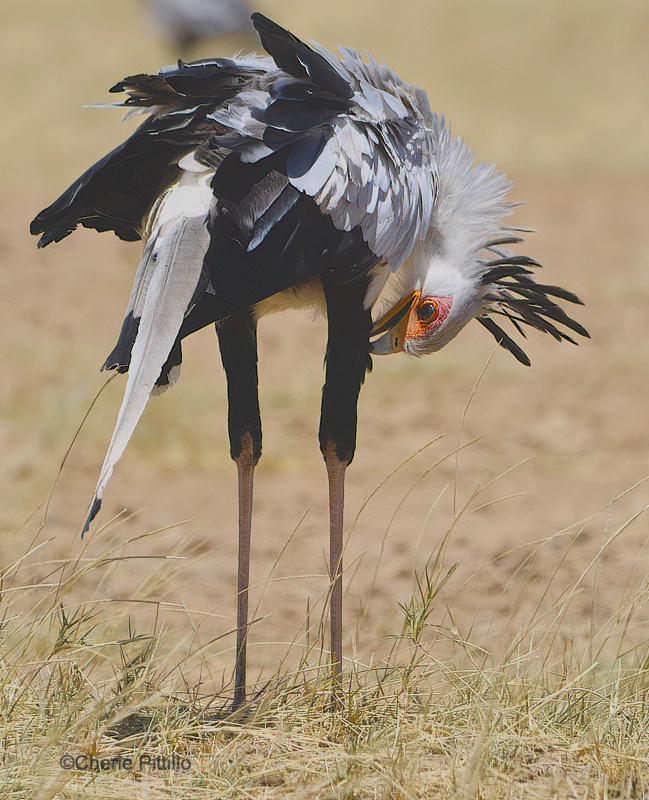
HOME RANGE AND COURTSHIP
Typically these birds may walk in pairs or singly or sometimes in small groups. Often active about two hours after sunrise, they will feed until late afternoon and then return to the roost. But they roost or nest in a tree top or tall shrub especially acacia trees. Many sources state reuse of only one nest, but I beg to differ. In a twenty year study of nesting behavior six different nests were used and reused.
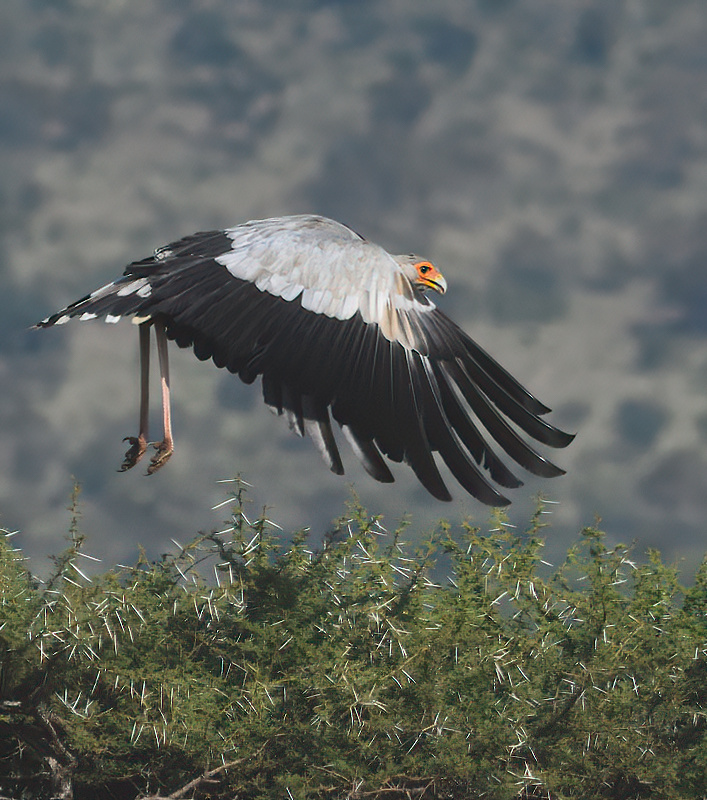
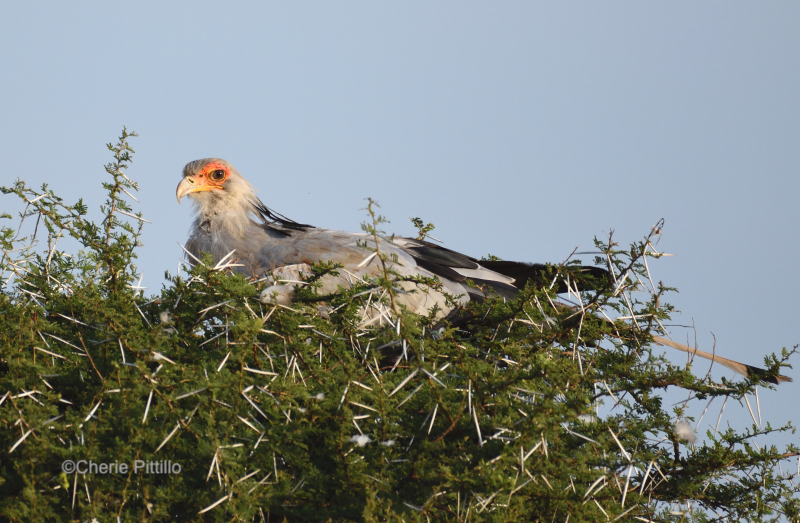
Secretarybirds appear to be monogamous, both may participate in aerial courtship flights, as well as nest building, incubating, and feeding 1-3 chicks. Both food and water may be regurgitated to the young. They may defend a home range that can vary from about eight square miles to about 195 square miles depending on food availability and abundance of other Secretarybirds. They will defend the home range/nest/chicks/immatures from any critter including a topi antelope, four feet at the shoulder, and even other raptors such as the Martial Eagle.
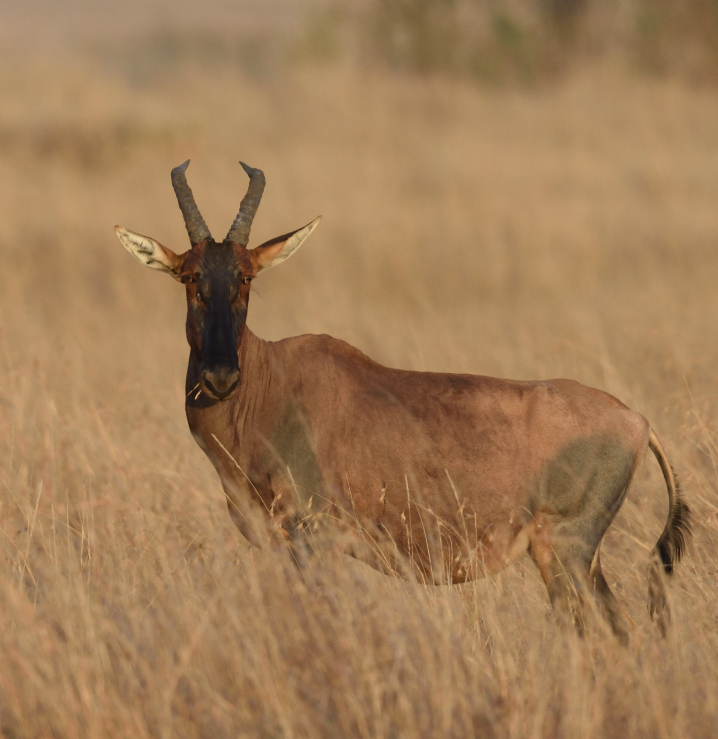
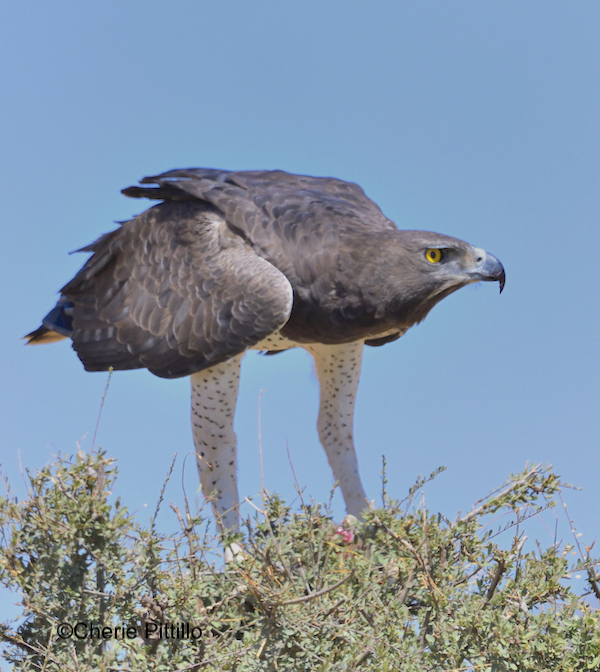
IT IS VOCAL!
Often considered silent except for the chicks, Secretarybird uses a variety of different vocal calls and this link sounds like a growl from a mammal, not a bird.
https://search.macaulaylibrary.org/catalog?taxonCode=secret2&mediaType=audio
NATIONAL SYMBOL AND STATUS
The Secretarybird graces the Coat of Arms of South Africa, where she represents power as a messenger from heaven. With her raised wings, she protects the entire people of South Africa. Let’s hope these same people can protect her as this species is now considered endangered due to habitat loss, hunting and captured for trade. Some people use them at their homes to kill snakes. She has been protected in the country since 1968.

DISCLAIMER: REFERENCES DO NOT AGREE ON INFORMATION:
Birds of East Africa, 300 Easy-to-see Birds in East Africa, Newman’s Birds of Southern Africa, Handbook of Bird Biology
http://datazone.birdlife.org/species/factsheet/secretarybird-sagittarius-serpentarius
https://birdsoftheworld.org/bow/species/sagitt1/cur/introduction
https://search.macaulaylibrary.org/catalog?taxonCode=secret2&mediaType=audio
https://www.britannica.com/animal/topi
https://www.mississippinativeplantsociety.org/uploads/5/1/9/6/5196427/vol_29_issue_2.pdf
https://sora.unm.edu/sites/default/files/journals/condor/v070n01/p0031-p0034.pdf
https://animaldiversity.org/accounts/Sagittarius_serpentarius/
Cherie Pittillo, “nature inspired,” photographer and author, explores nature everywhere she goes. She’s identified 56 bird species in her Merida, Yucatan backyard view. Her monthly column features anecdotes about birding in Merida, Yucatan and also wildlife beyond the Yucatan.
Contact: [email protected] All rights reserved, ©Cherie Pittillo


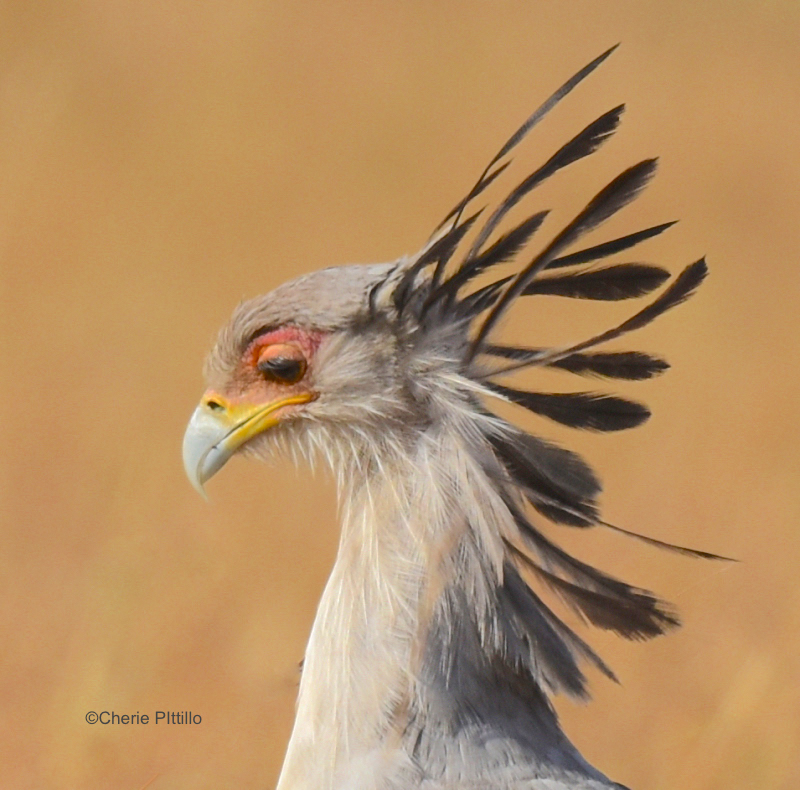

2 comments
As usual, terrific images–especially the flying one! Lots of interesting material in this article too. Thanks, Cherie–I really look forward to your articles.
Thank you, Bruce, for your consistent support! My research unveils a variety of tidbits which fascinates me and I hope my readers. I take a variety of images when I can which hopefully supports the research I find.